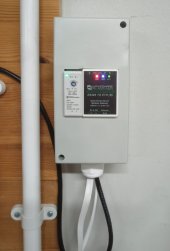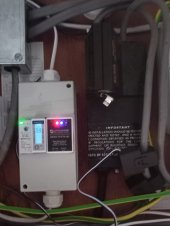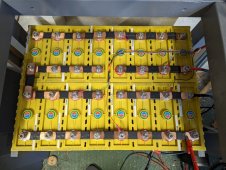green_graham
New Member
- Joined
- Sep 10, 2022
- Messages
- 3
Hi all, I've just found the forum whilst trying to research a solution.
I'm looking for some guidance with regards to battery storage.
I have a Luxpower 3.6K hybrid inverter with approx ~3Kwp solar panels.
I'm trying to figure out if it's feasible to DIY adding battery storage (obviously using a qualified electrician for connection).
I'm thinking of adding 3 of these:
https://batteryfactory.co.uk/.../pylon-us5000-4-8kwh-li...
One complication is that the inverter/panels are at the bottom of the garden so a direct CT clamp cable from the grid feed isn't possible.
A bit of research suggests that I should be able to connect the CT clamp to an RS485/MODBUS wireless transmitter/receiver to solve this. I'd appreciate any experiences in this regard and any product recommendations. I do see anything for sale that is a purpose built solution for this. Any links to products and/or homegrown solutions would be appreciated.
If I can't get that wireless link to work, I think I need to bite the bullet and get an additional inverter/charger and locate that and the batteries by the mains feed. This seems like a waste.
What I think I will need to purchase is the following, have I missed anything?
I'm looking for some guidance with regards to battery storage.
I have a Luxpower 3.6K hybrid inverter with approx ~3Kwp solar panels.
I'm trying to figure out if it's feasible to DIY adding battery storage (obviously using a qualified electrician for connection).
I'm thinking of adding 3 of these:
https://batteryfactory.co.uk/.../pylon-us5000-4-8kwh-li...
One complication is that the inverter/panels are at the bottom of the garden so a direct CT clamp cable from the grid feed isn't possible.
A bit of research suggests that I should be able to connect the CT clamp to an RS485/MODBUS wireless transmitter/receiver to solve this. I'd appreciate any experiences in this regard and any product recommendations. I do see anything for sale that is a purpose built solution for this. Any links to products and/or homegrown solutions would be appreciated.
If I can't get that wireless link to work, I think I need to bite the bullet and get an additional inverter/charger and locate that and the batteries by the mains feed. This seems like a waste.
What I think I will need to purchase is the following, have I missed anything?
- 3x battery modules (these come with inter-battery cables)
- 3x pairs of battery brackets to stack
- DC isolation switch
- RS485 wireless transceiver
- 2x long cables to/from inverter









